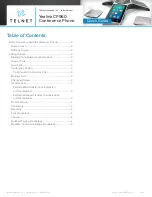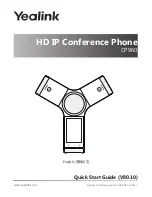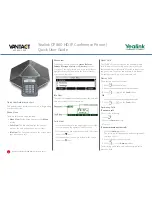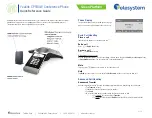
25
and cochlear implants), users may detect a buzzing, humming, or
whining noise. Some hearing devices are more immune than
others to this interference noise, and phones also vary in the
amount of interference they generate. The wireless telephone
industry has developed ratings for some of their mobile phones, to
assist hearing device users in finding phones that may be
compatible with their hearing devices. Not all phones have been
rated. Phones that are rated have the rating on their box or a label
on the box. The ratings are not guarantees. Results will vary
depending on the user’s hearing device and hearing loss. If your
hearing device happens to be vulnerable to interference, you may
not be able to use a rated phone successfully. Trying out the
phone with your hearing device is the best way to evaluate it for
your personal needs.
* This Senior mobile phone complies with the M3/T3.
·
CERTIFICATION INFORMATION (SAR)
THIS MOBILE DEVICE MEETS GUIDELINES FOR EXPOSURE
TO RADIO WAVES.
Your mobile device is a radio transmitter and receiver. It is
designed not to exceed the limits for exposure to radio waves
recommended by international guidelines. These guidelines were
developed by the independent scientific organization ICNIRP and
include safety margins designed to assure the protection of all
persons, regardless of age and health.
The exposure guidelines for mobile devices employ a unit of
measurement known as the Specific Absorption Rate or SAR. The
SAR limit stated in the ICNIRP guidelines is 2.0 watts/kilogram
(W/kg) averaged over 10 grams of tissue. Tests for SAR are
conducted using standard operating positions with the device
transmitting at its highest certified power level in all tested


































